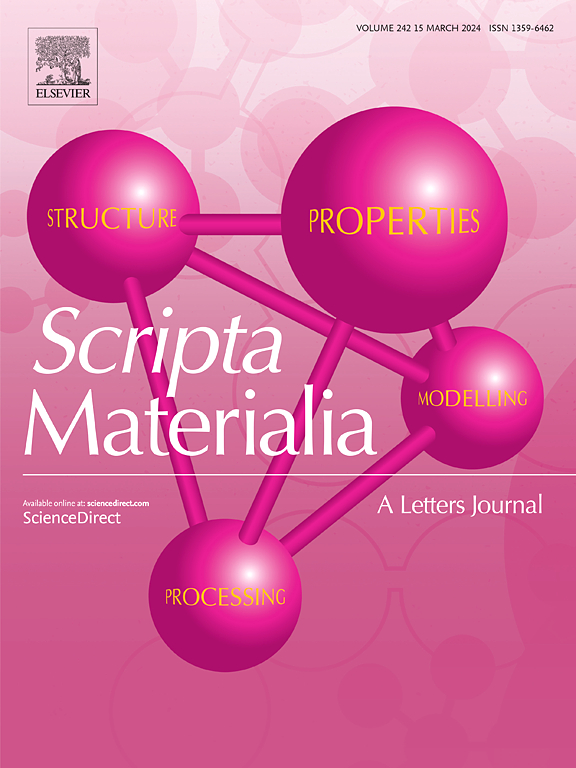通过杂质水平和缺陷工程提高Ga掺杂GeSb2Te4单晶的热电性能
IF 5.3
2区 材料科学
Q2 MATERIALS SCIENCE, MULTIDISCIPLINARY
引用次数: 0
摘要
具有层状结构的GeSb2Te4化合物显示出中温热电应用的潜力。在本研究中,我们利用Bridgman方法成功合成了ga掺杂的GeSb2Te4单晶,热电性能得到了显著提高。第一性原理计算证实,在Ge位点上掺杂Ga优化了载流子浓度,并在带隙中引入了杂质水平,显著提高了GeSb2Te4的塞贝克系数。此外,Ga元素的引入使晶格中的点缺陷增强了声子散射。由于热导率的降低和功率因数的增加,Ge0.93Ga0.07Sb2Te4单晶样品在773 K时的峰值zT为~ 0.87,在323-773 K时的平均zT为~ 0.6,与原始GeSb2Te4晶体相比分别提高了~ 34%和~ 58%。该研究为优化其他层状化合物的热电性能提供了一种新的策略。本文章由计算机程序翻译,如有差异,请以英文原文为准。

Boosting thermoelectric performance of Ga doped GeSb2Te4 single crystals by impurity level and defect engineering
The GeSb2Te4 compound, with a layered structure, shows potential for mid-temperature thermoelectric applications. In this study, we successfully synthesized Ga-doped GeSb2Te4 single crystals using the Bridgman method, resulting in a significant enhancement in thermoelectric performance. Ga doping at Ge sites optimized carrier concentration and introduced impurity levels in the bandgap, as confirmed by first-principles calculations, significantly enhancing the Seebeck coefficient of GeSb2Te4. Additionally, the introduction of the Ga element brought about point defects in the lattice, which strengthen phonon scattering. Due to the reduced thermal conductivity and increased power factor, the Ge0.93Ga0.07Sb2Te4 single-crystal sample achieved a peak zT of ∼0.87 at 773 K and an average zT of ∼0.6 over 323‒773 K, representing improvements of ∼34 % and ∼58 %, respectively, compared to the pristine GeSb2Te4 crystal. This research provides a new strategy for optimizing the thermoelectric performance of other layered compounds.
求助全文
通过发布文献求助,成功后即可免费获取论文全文。
去求助
来源期刊

Scripta Materialia
工程技术-材料科学:综合
CiteScore
11.40
自引率
5.00%
发文量
581
审稿时长
34 days
期刊介绍:
Scripta Materialia is a LETTERS journal of Acta Materialia, providing a forum for the rapid publication of short communications on the relationship between the structure and the properties of inorganic materials. The emphasis is on originality rather than incremental research. Short reports on the development of materials with novel or substantially improved properties are also welcomed. Emphasis is on either the functional or mechanical behavior of metals, ceramics and semiconductors at all length scales.
 求助内容:
求助内容: 应助结果提醒方式:
应助结果提醒方式:


